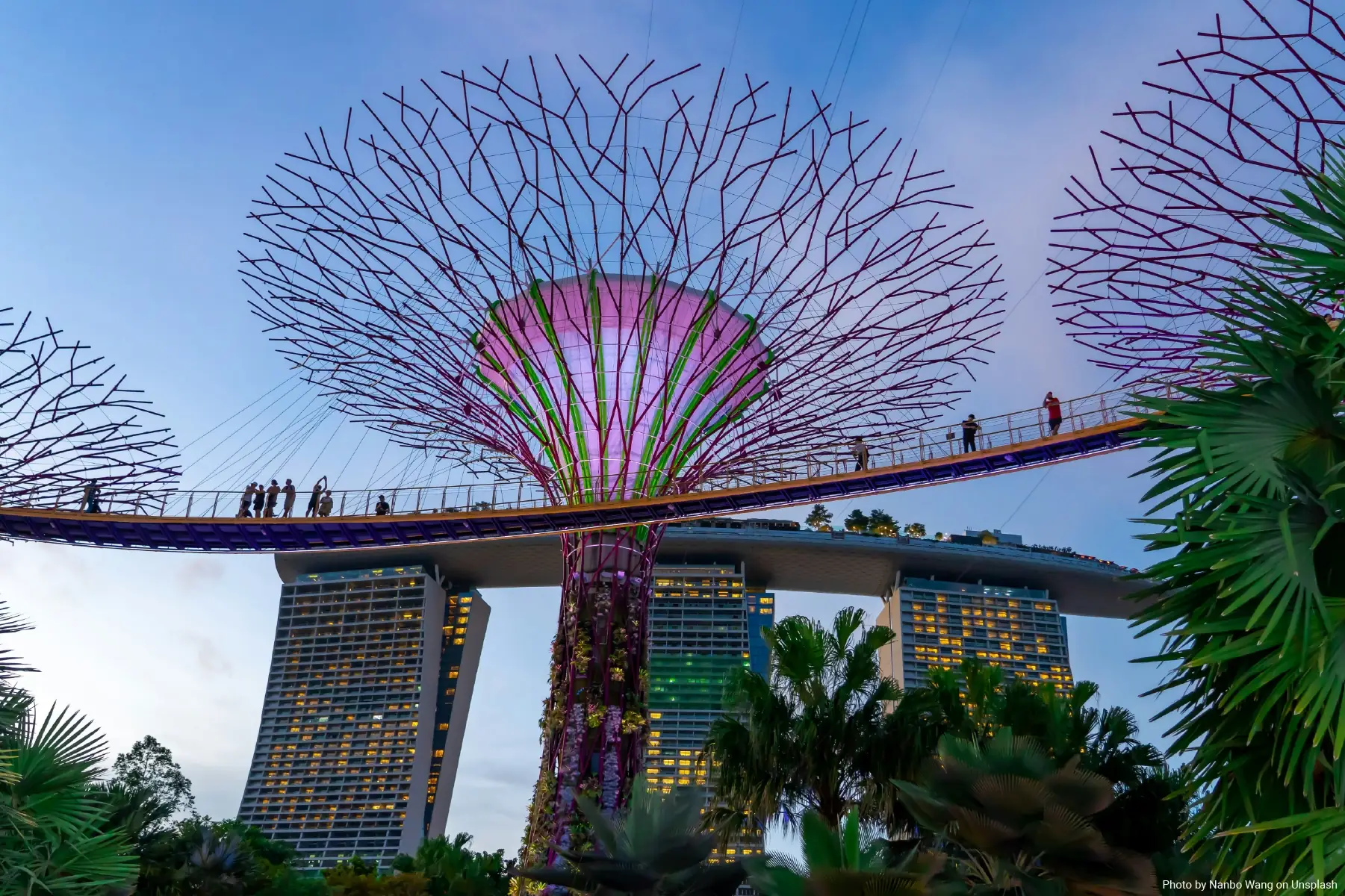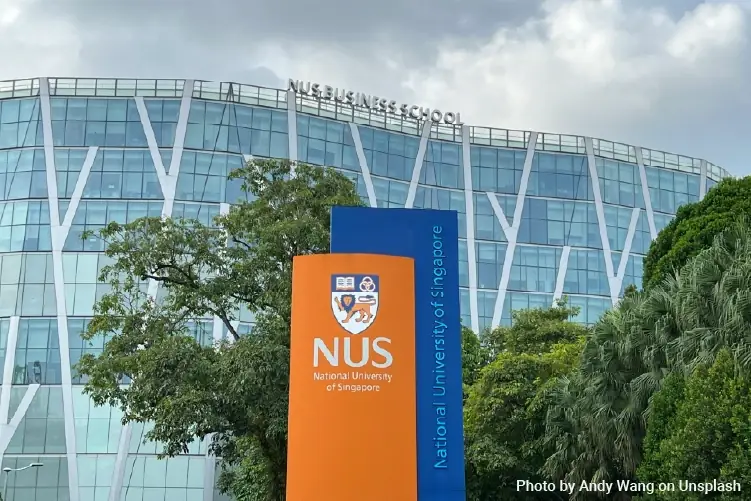Languages Spoken in Singapore: What Every International Student Should Know

Are you gearing up for your study abroad adventure in Singapore? Kudos to you! This dazzling city-state is not just a hub for world-class education, but also a cultural melting pot that offers a unique blend of traditions, cuisines, and—you guessed it—languages.
Singapore has four official languages—Malay, Mandarin, Tamil, and English—and a vibrant linguistic landscape that reflects its multicultural heritage. Whether you're ordering your first cup of 'kopi' (coffee), navigating the MRT (train), or making friends on campus, understanding the language diversity can make your transition smoother, richer, and a lot more fun.
This guide is your ultimate companion to decoding the languages spoken in Singapore. We’ll cover why these languages matter, how to pick up key lingo, and why understanding them will open doors to new friendships, better communication, and a genuine sense of belonging. Consider this your linguistic passport to life in Singapore!
Why Singapore’s Languages Matter
Living in a multilingual environment like Singapore may seem daunting at first, but it’s also electrifying. Language is the heartbeat of culture, and by understanding the languages of Singapore, you’re not just learning words—you’re also discovering the nation's soul.
Here’s why it’s beneficial for you to get acquainted with Singapore’s linguistic tapestry:
- Fostering Connections: Speaking even a few local phrases can help you connect with classmates and friends, and locals really appreciate the effort—trust us!
- Navigating Daily Life: Knowing the right terms helps when you're exploring hawker centres, buying SIM cards, or figuring out MRT routes.
- Cultural Appreciation: Language opens the door to learning about customs, celebrations, and even local jokes. (Yes, Singlish jokes are unbeatable.)
The Four Official Languages of Singapore
1. English (The Global Connector)
English is Singapore’s de facto business and educational language. If you’re an international student, good news—your lectures, assignments, and exams will all be in English. Spoken with a unique rhythm and style, Singaporean English often features some quirks from Singlish (more on that later!).
-
Where You’ll Need It:
- Universities and workplaces
- Official documents and forms
- Everyday communication with locals and other students
2. Mandarin (中华文化的桥梁)
With around 74% of Singaporeans being of Chinese descent, Mandarin is widely spoken in homes and communities. This language connects you to Singapore’s Chinese heritage, from Lunar New Year celebrations to lion dances, not to mention your new favourite dim sum (small plates of dumplings and other snack dishes) spot.
Useful Mandarin phrases:
- “你好” (Nǐ hǎo) – Hello
- “谢谢” (Xièxie) – Thank you
- “这多少钱?” (Zhè duō shǎo qián?) – How much is this?
3. Malay (The National Language)
Spoken by the native Malay community and recognised as Singapore’s national language, Malay is central to the island's heritage and national identity. The national anthem, "Majulah Singapura," is sung in Malay, and many street names trace their origins to this language.
Useful Malay phrases:
- “Apa khabar?” – How are you?
- “Terima kasih” – Thank you
- “Tandas di mana?” – Where is the toilet?
4. Tamil and other Indian languages
Tamil is the most widely spoken Indian language in Singapore, reflecting the city’s vibrant Indian community. You’ll hear it in Little India, at Hindu temples, and during festivities like Deepavali and Thaipusam. Some Singaporeans who are of Indian descent also speak other Indian languages, such as Hindi or Punjabi.
Useful Tamil phrases:
- “Vanakkam” – Hello
- “Nandri” – Thank you
Singlish – The Language That Binds Singapore Together
Ahhh, Singlish—Singapore’s unofficial fifth language. It’s a creole that blends English with words, phrases, and grammar from Malay, Mandarin, Tamil, and dialects particularly Hokkien. Friendly, informal, and endlessly entertaining, Singlish is a reflection of the island’s multicultural vibes.
Common Singlish phrases to get you started:
- “Can lah!” – Yes, sure!
- “Don’t play play.” – Don’t joke around.
- “Where got time?” – I’m too busy for that.
- “I blur lah.” – I’m confused.
- “Alamak.” – Oh my goodness!
- "Abuden" - Obviously.
- "Shiok" - Very enjoyable.
While you likely won’t need Singlish in formal settings, knowing a phrase or two will endear you to locals and make you feel like one of the squad.
Dialects Spoken in Singapore
Singapore is a vibrant melting pot of cultures, and its many dialects reflect the rich and diverse heritage of its people. Beyond Singlish, dialects like Hokkien, Teochew, Cantonese, Hakka, and Hainanese add life and colour to everyday conversations, each carrying its own unique story and traditions. Spoken by many of the older generations, these dialects nurture a sense of connection and belonging, especially within families and close-knit communities.
- Hokkien brings energy with its expressive, colourful phrases. You’ll often hear it in hawker centres or traditional performances, embodying the lively spirit of its speakers.
- Teochew enchants with its distinctive tones, cherished by the Teochew community for its use in meaningful moments like weddings and New Year celebrations.
- Cantonese thrives in Singapore’s rich food culture, making its mark in dim sum menus and Chinese opera, where its melodic sounds spread joy and tradition.
- Hakka proudly carries its heritage through unique customs and iconic dishes like Hakka Yong Tau Foo, a delicious reminder of its enduring legacy.
- Hainanese, though less widely spoken today, is forever tied to the iconic Hainanese chicken rice—a dish that unites and satisfies across all generations.
While younger generations often favour Mandarin as the common language, the magic of these dialects lives on through cultural events, storytelling, and community efforts to preserve them. Learning a simple greeting or phrase in one of these dialects is a rewarding way to embrace Singapore’s dynamic history and connect with its vibrant communities.
It is important to note that while Singapore’s dialects are cherished in daily life and cultural settings, they are not permitted on national TV or broadcast media, as part of the country’s language policies promoting the use of standard Mandarin and English.
Celebrate this incredible linguistic tapestry—it’s not just about speaking; it’s about discovering, connecting, and becoming part of a shared, thriving culture that welcomes everyone to explore its beauty. Dive in and uncover the joy of Singapore’s dialects!
Tips for Mastering Languages in Singapore
1. Practice the Basics
Start with easy phrases in Mandarin, Malay and Tamil. Apps like Duolingo or Memrise can be handy for beginners.
2. Make Language Friends
Joining a language exchange group or club on campus is both fun and effective. Bonus points for making friends from different cultural backgrounds!
3. Immerse Yourself in Local Culture
Eat like a local, celebrate like a local, and speak like a local. Attend festivals like Chinese New Year, Hari Raya (a major festival celebrated by Muslims worldwide), or Deepavali (a major Hindu festival celebrated as the "Festival of Lights") to experience the language used in its cultural context.
4. Use What You Learn
Don’t be shy about trying out new words or phrases in real life. Locals will appreciate your efforts, even if you make a mistake.
5. Watch and Listen
Binge on local TV dramas, radio shows, or even YouTube channels. And hey, the Singlish rap battles on TikTok? Pure gold.
Navigating Life as a Multilingual Student in Singapore
Understanding Singapore’s languages is about more than communication—it’s about creating a sense of belonging. Whether it’s sharing a laugh at a hawker centre or impressing your classmates with your Maltese (okay, we’re kidding…unless?), learning even a little of the local language will enhance your experience exponentially.
If the idea of learning multiple languages feels overwhelming, remember this—you don’t need to master all of them. Pick a few useful phrases, practice often, and approach each conversation with curiosity and openness.
Your Next Adventure Awaits
Life in Singapore isn’t just about acing your studies; it’s about immersing yourself in a place that will feel like a second home in no time. Every “lah,” “lor,” and “aiyo” you learn is another step to feeling truly at home.
Think of language as your personal key—unlock it, and the whole of Singapore opens up to you. Start speaking, start exploring, and start thriving.



